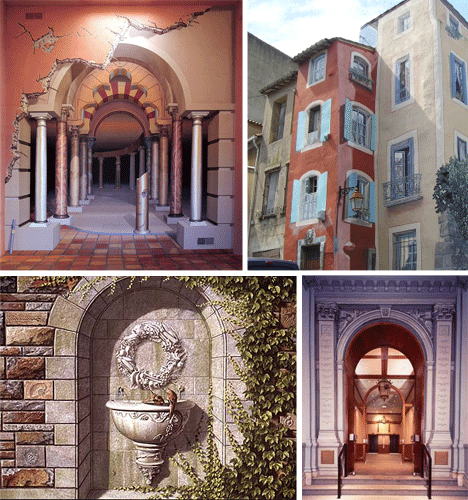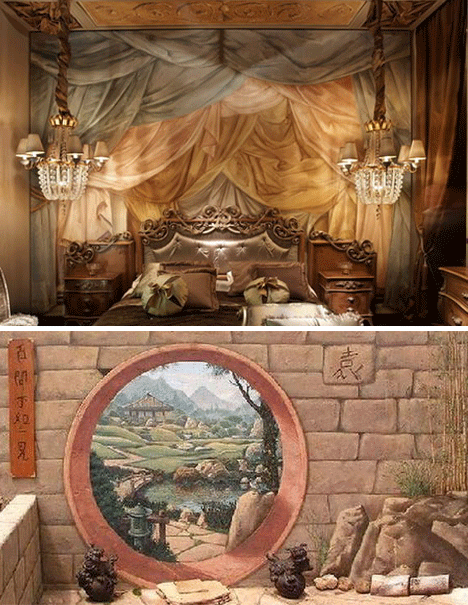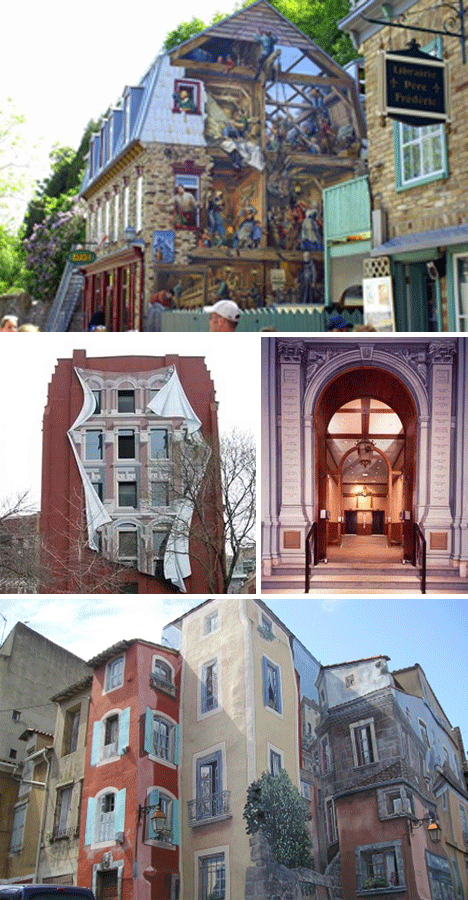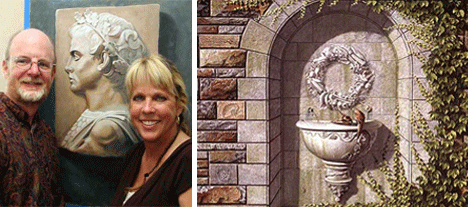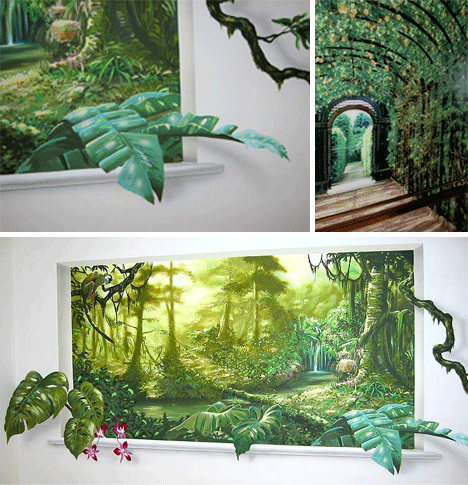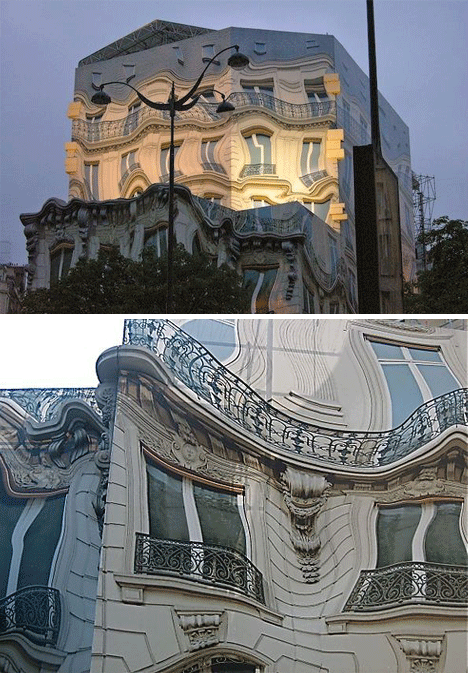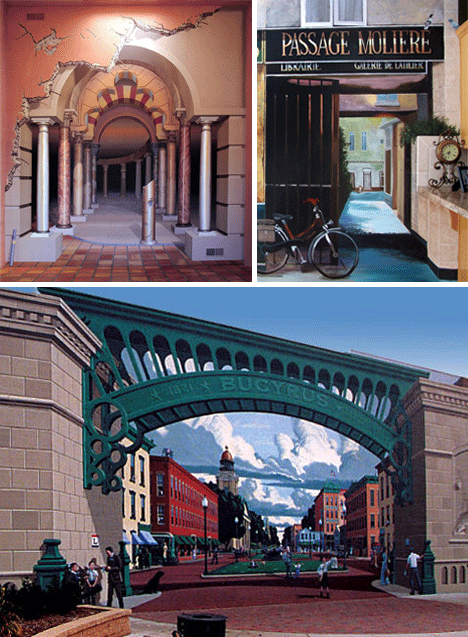Trompe L’oeil, french for “deceive the eye,” is the art of creating two dimensional images with such realism that they appear to be in three dimensions. A trick often used in the backdrop of classic films before the advent of green screen technology, these illusions are found in cities across the world.
(Images via wallpaintings, fludit)
Trompe L’oeil can be used for mundane decoration of a bedroom, or as a way to create a portal to a nonexistent world. The stunning realism can be eerie, and one will find their hand reaching to check if a window is real.
(Images via travelpod, joshuawiner, avriljoy, parmamelissa)
The sides of entire buildings can be upgraded without any actual structural changes. Like a second skin, a trompe l’oeil facade can create an image of a building that doesn’t actually exist (at least, not as you see it).
(Images via ask, stacyalexander, wikimedia)
Churches have long used trompe l’oeil to reflect the majesty of heaven through imaginary skylights, or as backdrops to an otherwise plain altar.
(Images via largerthanlifemurals, thefauxschool)
Classical images that were once sculpted laboriously out of stone can now be created with a delicate and careful use of trompe l’oeil techniques. For the most adept artists, any scene is possible.
(Images via sacredart-murals, apartmenttherapy, sacredart-murals)
Why add a window to a drab backyard or side alley, when one can have one that opens into a gorgeous world. Feeling claustrophobic? Gaze out into the lush jungle on the other side of your wall.
(Images via stylehive, happydayart)
Imagine walking down the street and stumbling upon a building that looks like the surface of a disturbed pond. This is one of the most dedicated examples, and stunning in the largeness of its scale.
(Images via urbanitan, judycollinsart, redferret)
Don’t step into that alley! An entire street can be created with the right application of paints, or a small side ally down to the most minute detail.
